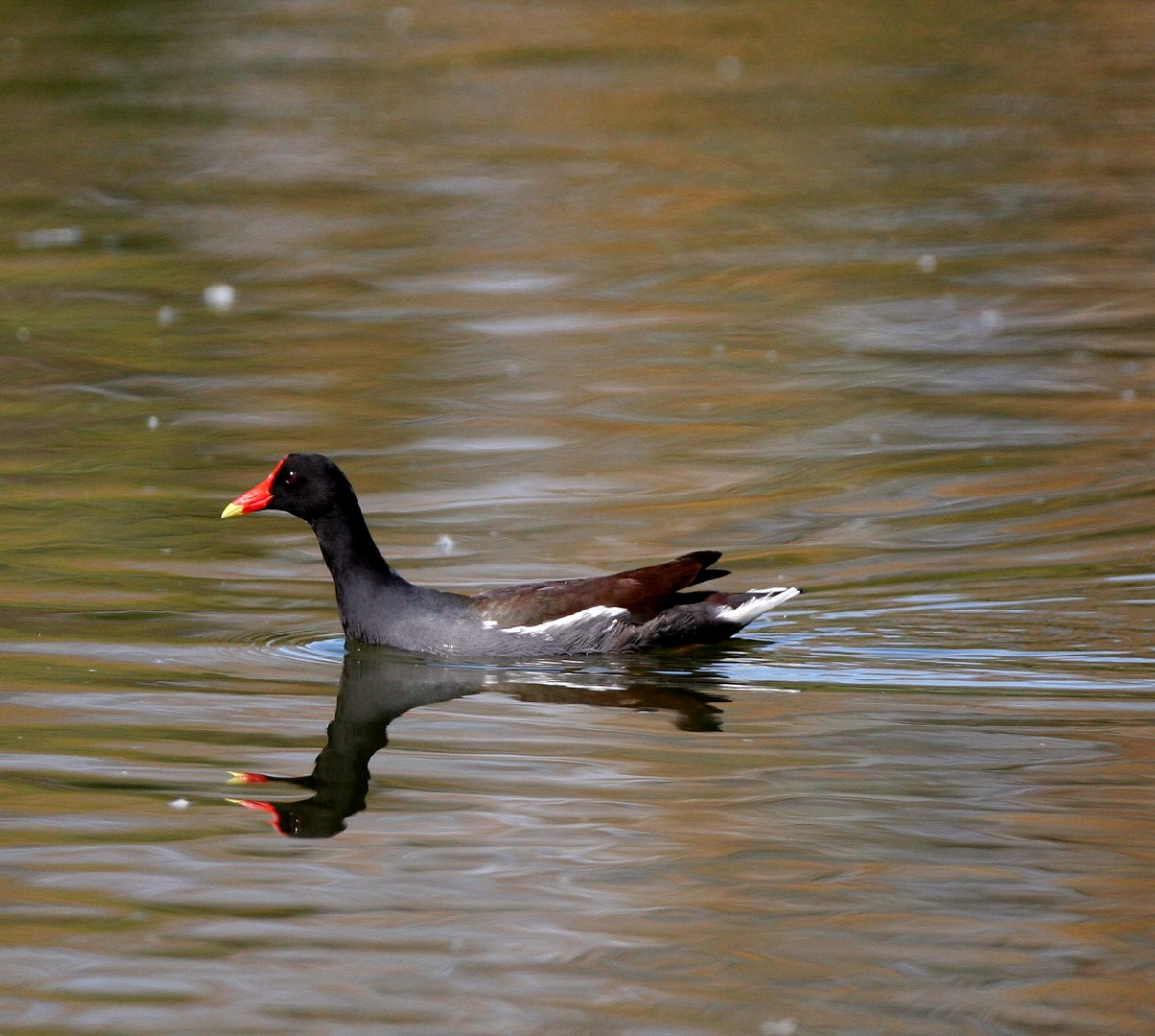Common Gallinule
A species of Moorhens Scientific name : Gallinula galeata Genus : Moorhens
Common Gallinule, A species of Moorhens
Botanical name: Gallinula galeata
Genus: Moorhens
Content
Description General Info
Description
The gallinule has dark plumage apart from the white undertail, yellow legs and a red frontal shield. The young are browner and lack the red shield. It has a wide range of gargling calls and will emit loud hisses when threatened. Measurements: Length: 12.6-13.8 in (32-35 cm) Weight: 10.9-16.1 oz (310-456 g) Wingspan: 21.3-24.4 in (54-62 cm) This is a common breeding bird in marsh environments and well-vegetated lakes. Populations in areas where the waters freeze, such as southern Canada and the northern USA, will migrate to more temperate climes. This species will consume a wide variety of vegetable material and small aquatic creatures. It forages beside or in the water, sometimes upending in the water to feed. Its wide feet allow it to hop about on lily pads. It is often secretive, but can become tame in some areas. Despite loss of habitat in parts of its range, the common gallinule remains plentiful and widespread. The common gallinule will fight to defend its territory. The nest is a basket built on the ground in dense vegetation. Laying starts in spring, between mid-March and mid-May in northern hemisphere temperate regions. About 8 eggs are usually laid per female early in the season; a brood later in the year usually has only 5–8 or even fewer eggs. Nests may be re-used by different females. Incubation lasts about three weeks. Both parents incubate and feed the young. These fledge after 40–50 days, become independent usually a few weeks thereafter, and may raise their first brood the next spring. When threatened, the young may cling to a parent's body, after which the adult birds fly away to safety, carrying their offspring with them. This species is parasitized by the moorhen flea, Dasypsyllus gallinulae. 
Size
23 - 41 cm
Nest Placement
Floating
Clutch Size
3 - 15 eggs
Incubation Period
1 - 2 broods
Number of Broods
19 - 22 days
Feeding Habits
Common Gallinule consumes a diet consisting of vegetation, seeds, insects, and snails. They gather surface or sub-surface sedge, grass, pondweed, and duckweed, along with flower seeds. For snails and insects, common Gallinule forages by flipping leaves using their feet to expose hidden prey.
Habitat
Common Gallinule favors freshwater and brackish habitats with plentiful vegetation, particularly marshes, ponds, and lakes across the Americas. Preferring areas with a blend of submerged, floating, and emergent flora, these birds thrive from sea level to middle elevations. Common Gallinule adapts well to human-made environments, including aquaculture ponds, rice fields, sewage lagoons, and urban stormwater retention ponds, where open water persists year-round.
Nest Behavior
During nest construction, common Gallinule demonstrate a division of labor where males gather most of the materials, and females skillfully arrange and anchor them to the vegetation. Their nesting season timings and egg-laying patterns are aligned with local conditions, and both parents participate in caring for the eggs and young.
Nest Characteristics
Common Gallinule typically select marshes, lakes, and ponds with dense emergent vegetation to construct their nests. These birds favor building atop thick mats of aquatic plants nearby the water's edge or occasionally in trees or shrubs. Nests are wide bowls around 10–12 inches across, crafted from grasses and sedges.
Dite type
Herbivorous
General Info
Feeding Habits
Bird food type
Sounds
Call
Recording location: Argentina
Call
Recording location: Mexico
Call
Recording location: Peru
Behavior
Common Gallinule exhibit a unique locomotion by walking atop floating vegetation and mucky substrates, a technique supported by their elongated toes. Typically observed adopting a crouch, they are known for their peculiar tail flicking. Flight, an uncommon and visibly strenuous activity for common Gallinule, reveals the white underwing. They navigate their aquatic habitats with distinctive head-forward strides and tails leveled, oftentimes with wings propped for balance. Territorial during breeding seasons, common Gallinule bond with family, contrasting with their winter behavior of mingling in foraging flocks alongside coots and ducks. Notable for forming enduring pairs, common Gallinule may occasionally display polygynous tendencies or participate in cooperative nesting, which includes polygynous females and even offspring assisting in sibling care.
